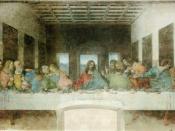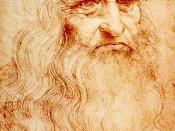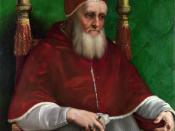Leonardo da Vinci
Leonardo da Vinci (1452-1519) was a Florentine artist and considered
one of the great masters of the High Renaissance. He was a painter, sculptor,
architect, engineer, and scientist. His innovations in the field of painting
influenced the course of Italian art for more than a century after his death. Not only
was his painting influenctual but also his scientific studies in the fields of anatomy,
optics, and hydraulics.
Paintings
Leonardo produced a relatively small number of paintings most of which
remained unfinished. In his early years, his style was compared to that of
Verrocchio. Leonardo's innovations were apparent in the The Last Supper, in
which he re-created a traditional theme in an entirely new way. Instead of showing
the 12 apostles as individual figures, he grouped them in dynamic compositional
units of three, and framing the figure of Christ. Christ announces that one of those
12 apostles will betray him.
Florentine painting.
The Mona Lisa, Leonardo's most famous work, is as well known for its
mastery of technical innovations as for the mysteriousness of its legendary smiling
subject. Sfumato is characterized a delicately atmospheric haze or smoky effect.
Leonardo uses Sfumato in the robe and smile of the Mona Lisa.
Sculptural and Architectural Drawings
None of Leonardo's sculptural projects were brought to completion so his
three-dimensional art can only be judged from his drawings. The same applys to
his architecture, none of his building projects were carried out. In his architectural
drawings he shows a mastery in the use of massive forms, a clarity of expression,
and especially a understanding of ancient Roman sources.
Scientific and Theoretical Projects
Leonardo's Scientific Theories were based on careful observation and
precise documentation. Unfortunately he never completed scientific projects. His
theories were contained in many notebooks, most of which were written...



Great essay
great portrayal of Leonardo Da Vinciès life and paintings. not too much depth but full of information.
5 out of 5 people found this comment useful.